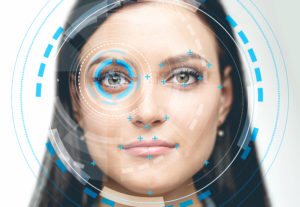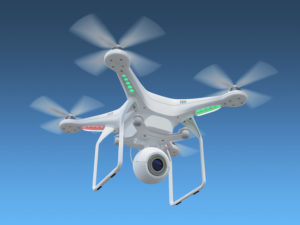IoT & Big Data – Safety in Numbers
Angie Kellen, Director, Client Services, Open Sky Communications
In my previous blogs, I covered IoT, Digital Twins and machine learning. While researching these topics, I came across some very interesting uses for IoT. We’re all familiar with IoT as it is used for health trackers – that mysterious-looking bracelet that some people obsessively stare at anticipating a high step count. While there are so many others, I want to focus on some of the ways law enforcement agencies are integrating IoT applications and big data for crime stopping.

As the digital age ushers in great convenience and entertainment for all of us, for law enforcement, it is enabling new and emerging tools to solve crimes faster and more efficiently. Historically, law enforcement agencies have been early adopters of technology as a way to increase efficiencies for keeping their cities safe when facing shrinking budgets and personnel cuts.
Connectivity and Cameras
One of the early efforts to incorporate technology into policing was connectivity. By providing a fast internet connection, it helped to speed up the process to check the validity of driver licenses, car registrations, or to research previous criminal records when on a traffic stop. The quick access to key information continues to keep officers safer as they know more about the person in the car before approaching them during traffic stops.
 It was in the late 1990’s that digital cameras were installed on roads to record traffic violations, such as running a red light and speeding. More recently, police officers have begun to wear body cameras, which are now being used in many different countries. This solution was implemented to increase the accountability on both sides of the law. While the increased internet speed and use of video cameras are valuable individually, it is when all the data can be reviewed and managed together that crime stopping enters the IoT era.
It was in the late 1990’s that digital cameras were installed on roads to record traffic violations, such as running a red light and speeding. More recently, police officers have begun to wear body cameras, which are now being used in many different countries. This solution was implemented to increase the accountability on both sides of the law. While the increased internet speed and use of video cameras are valuable individually, it is when all the data can be reviewed and managed together that crime stopping enters the IoT era.
Insights from Big Data – Chicago’s ‘Pre-crime’ Initiative
The ‘pre-crime’ initiative, or predictive policing, is led by the Chicago Police Department and Chicago University Urban Labs. The Chicago Police Department is applying machine learning and predictive analytics to existing police data sets, which includes crime incidents, arrests, and weather data. When historical data (like previous arrest records) is combined with real-time IoT data, such as sensor-influenced cameras designed to detect gunshots (ShotSpotter), it is easier to identify problem locations and understand the conditions in which crimes can take place.
 Combining all of this information is HunchLab: a geographic prediction tool that uses data modeling to predict risk in specific locations across the city. At-risk areas are highlighted on-screen, while recommendations for evasive action (such as dispatching a highly visible patrol car to assess the situation and deter criminals) are displayed alongside. This information is then integrated into a ‘decision support system’, made available to individual police officers on the beat.
Combining all of this information is HunchLab: a geographic prediction tool that uses data modeling to predict risk in specific locations across the city. At-risk areas are highlighted on-screen, while recommendations for evasive action (such as dispatching a highly visible patrol car to assess the situation and deter criminals) are displayed alongside. This information is then integrated into a ‘decision support system’, made available to individual police officers on the beat.
Another example of a decision support system is the IBM i2 Coplink. This tool combines various data sets (such as arrest records, mugshots, location data and known gang affiliations) into a single dashboard. There, police across different locations can view and share critical information simply and securely. This format helps to reduce the risk of information slipping through the cracks during complex investigations. Here is a video if you want more information on Coplink.
Manchester, New Hampshire’s Big Data Results
Chicago isn’t the only city using predictive policing. IBM has been working with the police department of Manchester, New Hampshire, to fight crime before it happens using IBM’s SPSS Modeler software. Currently, this predictive approach has worked best against burglaries. Manchester reported reductions of 12% in robberies, 21% in burglaries, and 32% in theft from items in vehicles, by following the preventive action recommendations from statistical analysis. Even collecting weather data has played an important part in predicting when robberies will take place. A key finding is that thieves don’t like rain! So, fair weather days provide higher occasions for crime.
Software and Connected Devices
 The predictive policing includes eye detection software and motion and sensor technology. These are being used to detect psychological and physical behavior to tell if people are telling the truth (such as when questioning travelers’ motives when crossing from one country’s border to another). An Automated Virtual Agent for Truth Assessments in Real Time (AVATAR) is already being tested by border agents from the U.S., Canada and European Union, and one researcher says it has a deception detection success rate of up to 80 percent — which is better than human agents. The technology relies on sensors and biometrics, and its lie-detection capabilities are based on eye movements or changes in voice, posture and facial gestures.
The predictive policing includes eye detection software and motion and sensor technology. These are being used to detect psychological and physical behavior to tell if people are telling the truth (such as when questioning travelers’ motives when crossing from one country’s border to another). An Automated Virtual Agent for Truth Assessments in Real Time (AVATAR) is already being tested by border agents from the U.S., Canada and European Union, and one researcher says it has a deception detection success rate of up to 80 percent — which is better than human agents. The technology relies on sensors and biometrics, and its lie-detection capabilities are based on eye movements or changes in voice, posture and facial gestures.
Of course, facial recognition technology has huge potential in the fight against crime. The technology has been around for a while, but with advanced analytics algorithms and increased computing power to process images in real time, this tactic is becoming even more effective.
 Let’s not forget the use of drones as the ‘eyes in the sky’ for when a helicopter is too much. Drones are now being used for everything from missing person investigations to tracking suspects in weapons incidents and counter-terrorism operations. It is also being used to monitor coastlines and woodlands to help fight wildlife crime. Some law enforcement agencies have started to use drones to investigate fatal and serious accident scenes. You can read more here on drones and crime fighting.
Let’s not forget the use of drones as the ‘eyes in the sky’ for when a helicopter is too much. Drones are now being used for everything from missing person investigations to tracking suspects in weapons incidents and counter-terrorism operations. It is also being used to monitor coastlines and woodlands to help fight wildlife crime. Some law enforcement agencies have started to use drones to investigate fatal and serious accident scenes. You can read more here on drones and crime fighting.
Personal IoT devices are becoming increasingly prominent in criminal investigations and discovery. Today, Fitbit and even pacemaker data is being used to fight crime. As noted in this article, data from IoT-connected devices can be compared with data from other connected devices by law enforcement to confirm or dispel alibis and stories to find the guilty. For example, Karen Navarra’s Fitbit helped provide clues to San Jose police investigating her death. Police on the scene knew right away that it was a staged suicide and that a murder had taken place. Her stepfather, Anthony Aiello, informed the police he had visited Navarra on Sept. 8, with pizza and biscotti and stayed with her for about 15 minutes. Although Aiello reportedly denied killing Navarra, nearby cameras captured images of Aiello’s car parked at Navarra’s home. It was during this time when Aiello was still there that the Fitbit the victim was wearing showed her heart rate suddenly spike, slow down and stop. The evidence was clear and San Jose Police arrested Aiello on charges of murder based on Fitbit evidence.
In December 2015, Richard Dabate claimed a so-called burglar beat him and shot his wife, Connie, in their home in Ellington, Connecticut. Connie was wearing a Fitbit. Police requested the device’s data, which showed she had walked 1,217 feet after returning home from her exercise class. This is a lot more than the 125 feet it would take her to go from the car in the garage to the basement as per Richard’s account. The Fitbit also registered Connie moving roughly an hour after Richard said someone killed her, which he said was before 9:10 a.m. Facebook records also disproved Richard’s story as it showed Connie had posted to the site as late as 9:46 a.m. As his wife’s Fitbit told another tale, Police had clear evidence contrary to his alibi/story and charged Dabate with the murder.
Social Media – Uncovering Tone and Threats
Crimes that take place in the open are just part of law enforcement’s challenges. Enter social media. Some attacks on social media share common characteristics with crimes committed in the open, which can be helpful when trying to flag them in advance. One is the ‘social media brag’. Would-be attackers or terrorists who can’t resist showing off on Facebook or Twitter inadvertently leave valuable traces for those looking to catch them. This approach has two challenges – the sheer volume of social media content and the fact that a lot of people say things they don’t mean due to social media’s somewhat anonymous protective format. How can we identify what is dangerous, and what is merely unpleasant or a rant?
 One answer is The Tactical Institute, which works to identify threats on social media and pre-empt threatening or violent incidents. There are a number of combat-wounded veterans on the team, who are specially trained to evaluate posts for criminal intent, and to determine whether these people have the means and opportunity to carry out the threat. This work is a slow process. But, by using Watson Analytics for Social Media to analyze the social sentiment of user-generated content, the team can identify warning signs and flag problem posts for further review. As a result, only critical information is passed on to the Tactical Institute staff, which significantly reduces the time it takes to identify valid threats.
One answer is The Tactical Institute, which works to identify threats on social media and pre-empt threatening or violent incidents. There are a number of combat-wounded veterans on the team, who are specially trained to evaluate posts for criminal intent, and to determine whether these people have the means and opportunity to carry out the threat. This work is a slow process. But, by using Watson Analytics for Social Media to analyze the social sentiment of user-generated content, the team can identify warning signs and flag problem posts for further review. As a result, only critical information is passed on to the Tactical Institute staff, which significantly reduces the time it takes to identify valid threats.
To completely eliminate threats or crime from our lives may never be possible. However, teaming up IoT technology with big data and predictive analytics, there truly is safety in numbers. This insight goes a long way to providing precise, dependable tools that support law enforcement agencies and other organizations as they do their best to keep us all safe.